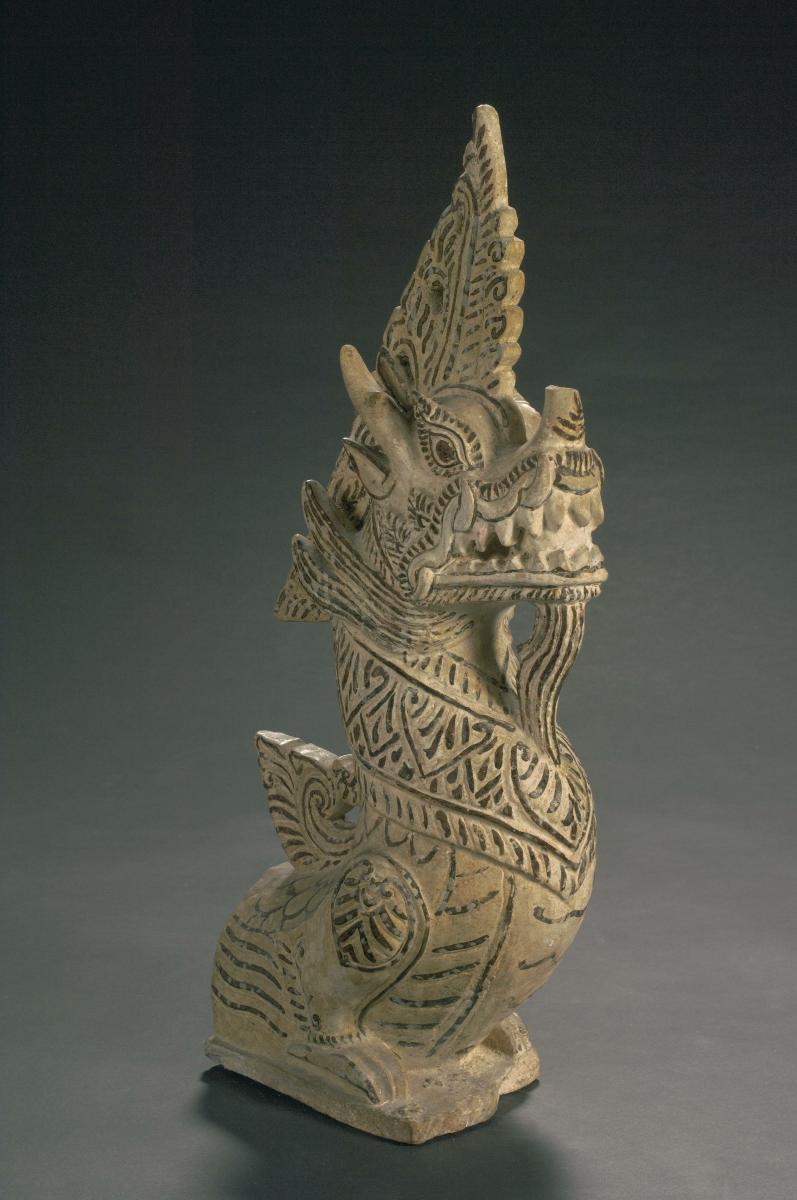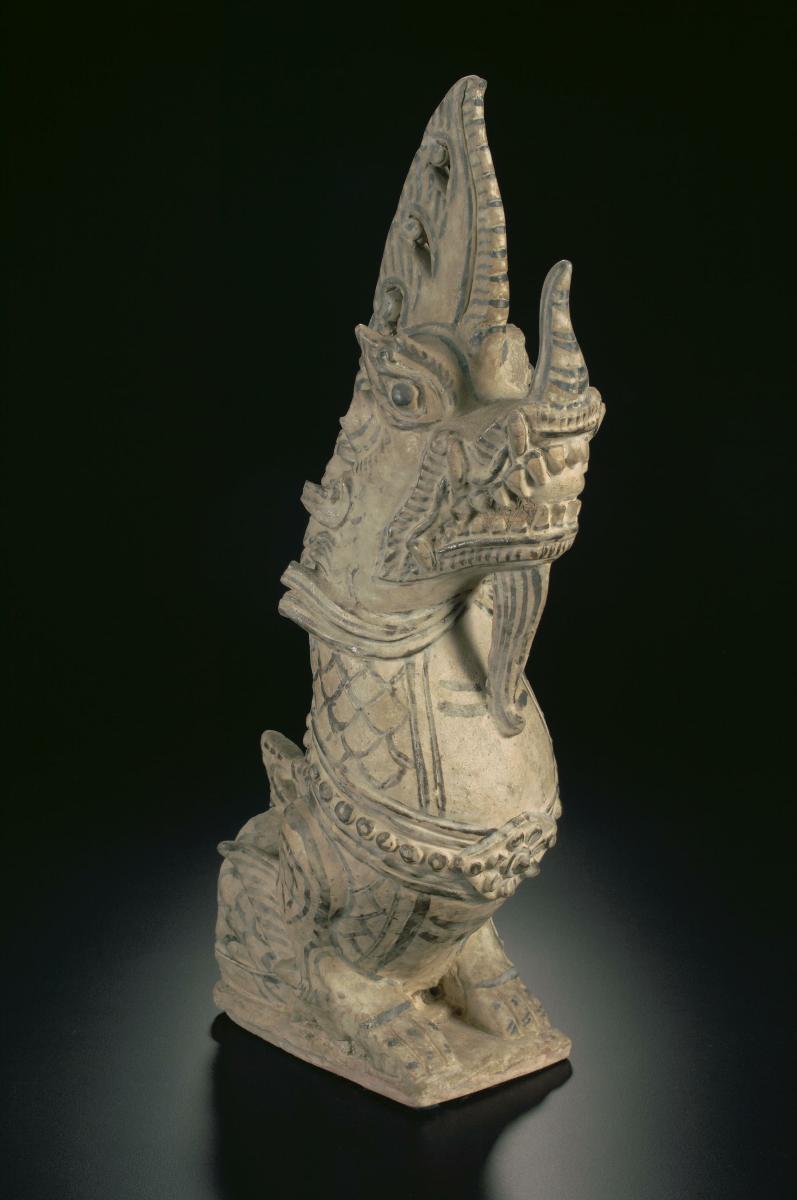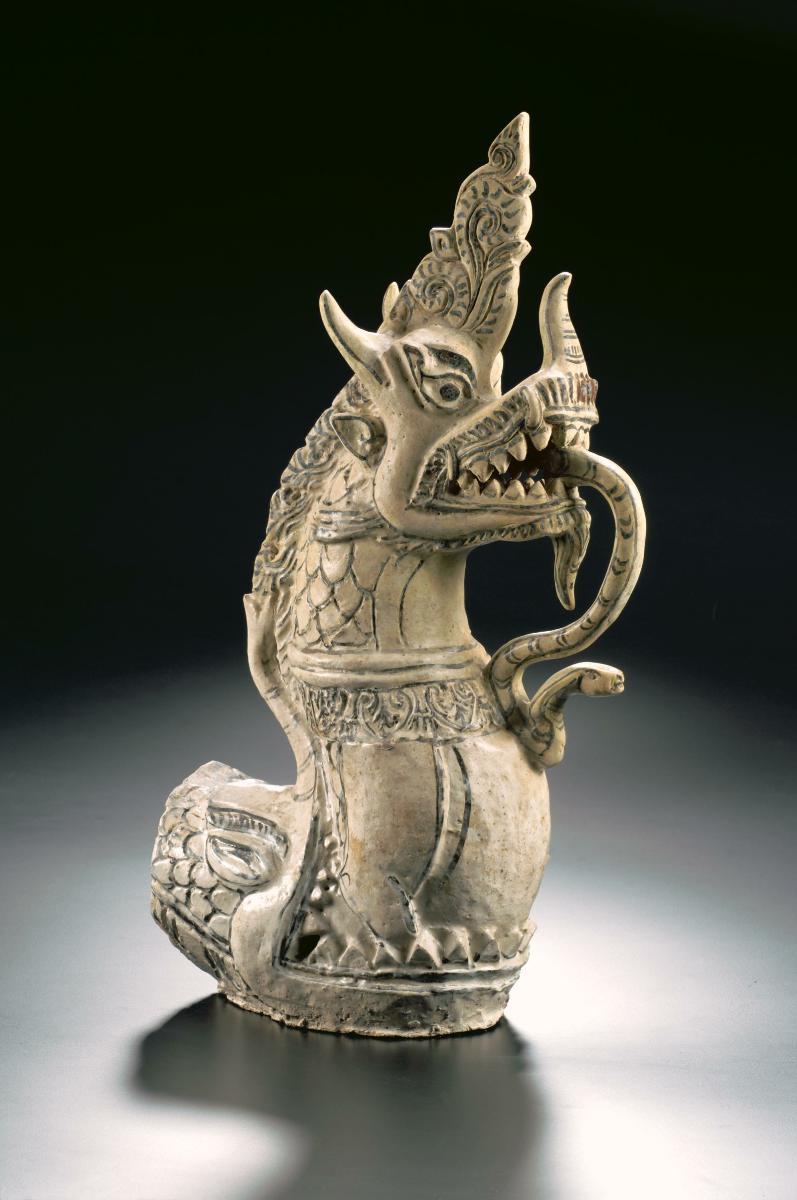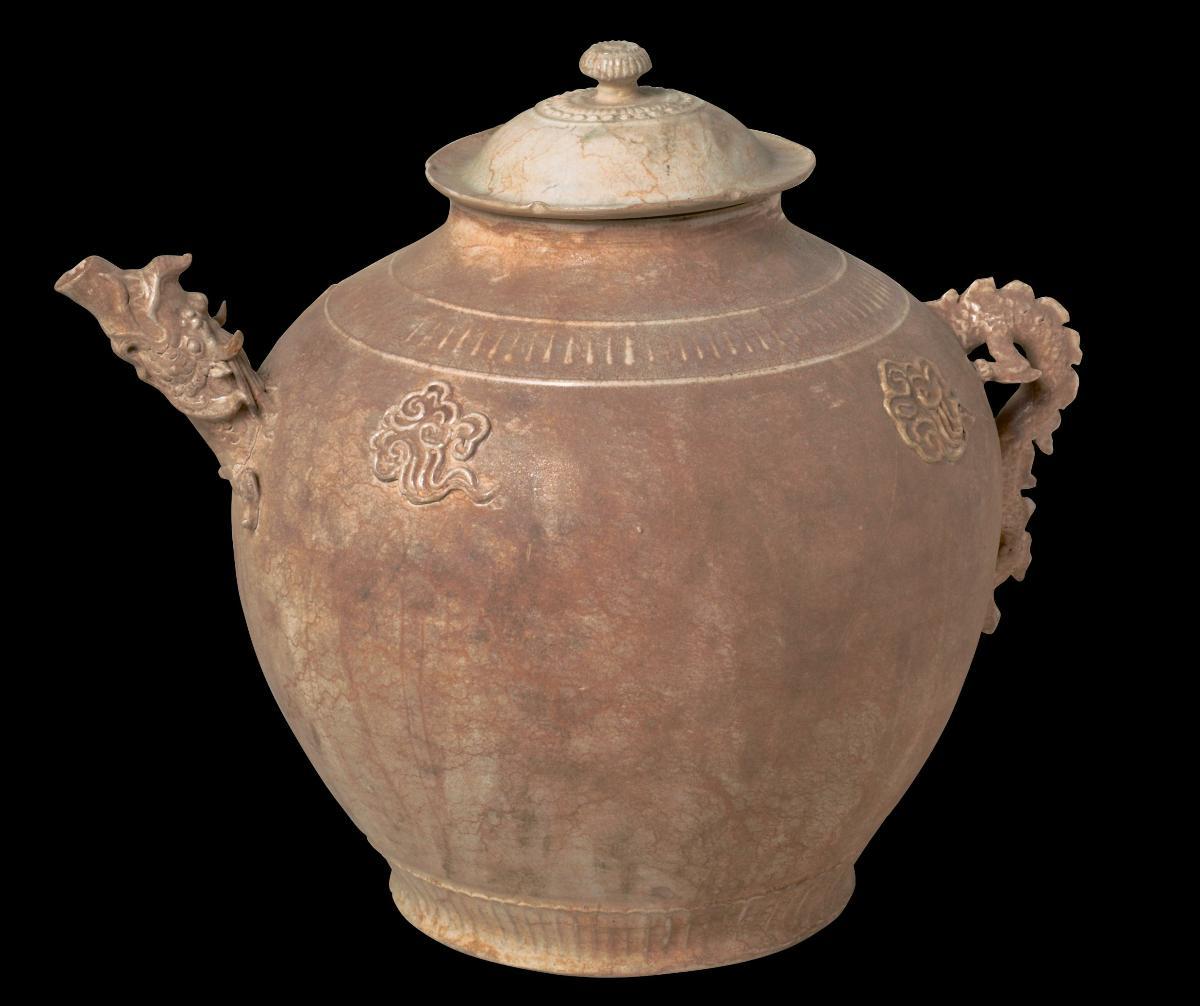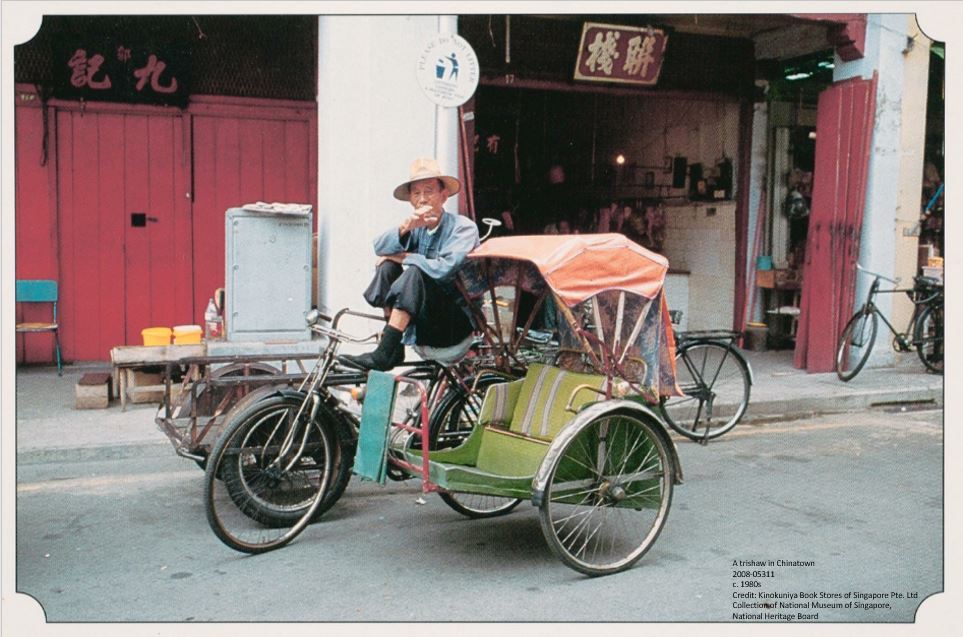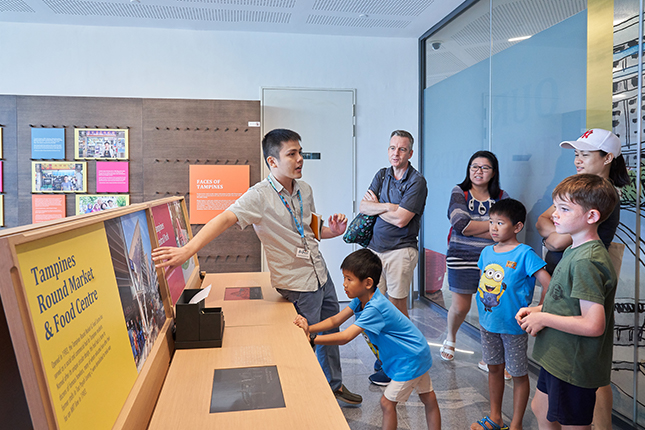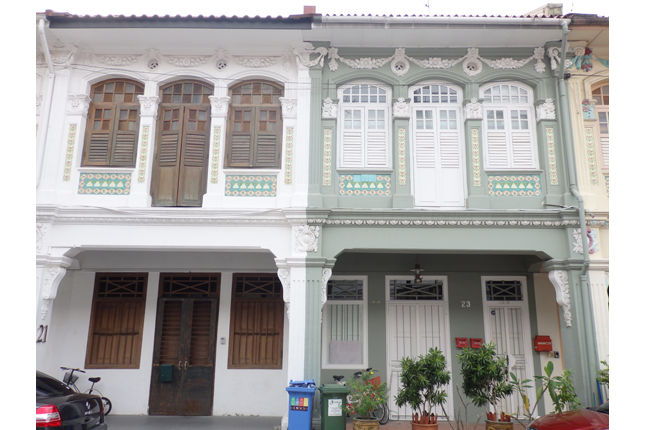This architectural ornament is in the shape of a Hindu-Buddhist mythical water spirit or 'makara'. Heavily potted, it was made from moulded parts joined together. The hollow body and the hole at the back allow for its attachment to the roof of a temple.The makara is a sea monster, usually with the head of an elephant and the body of a fish. It is associated with water as a source of life and power, symbolising power and strength. The Hindu-Buddhist makara motif is usually placed on door frames, lintels, thresholds and gateways of north Indian temples in Southeast Asia. The Thai version is described as crocodile-like in appearance.Ceramics offered a subsitute for the lack of fine sandstone to decorate religious monuments constructed on a large scale particularly at Sukhothai during the 14th century.




